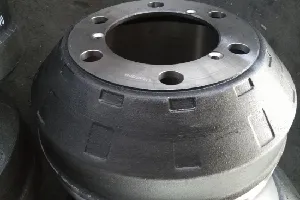
-
 Afrikaans
Afrikaans -
 Albanian
Albanian -
 Amharic
Amharic -
 Arabic
Arabic -
 Armenian
Armenian -
 Azerbaijani
Azerbaijani -
 Basque
Basque -
 Belarusian
Belarusian -
 Bengali
Bengali -
 Bosnian
Bosnian -
 Bulgarian
Bulgarian -
 Catalan
Catalan -
 Cebuano
Cebuano -
 Corsican
Corsican -
 Croatian
Croatian -
 Czech
Czech -
 Danish
Danish -
 Dutch
Dutch -
 Inggris
Inggris -
 Esperanto
Esperanto -
 Estonian
Estonian -
 Finnish
Finnish -
 French
French -
 Frisian
Frisian -
 Galician
Galician -
 Georgian
Georgian -
 German
German -
 Greek
Greek -
 Gujarati
Gujarati -
 Haitian Creole
Haitian Creole -
 hausa
hausa -
 hawaiian
hawaiian -
 Hebrew
Hebrew -
 Hindi
Hindi -
 Miao
Miao -
 Hungarian
Hungarian -
 Icelandic
Icelandic -
 igbo
igbo -
 Indonesian
Indonesian -
 irish
irish -
 Italian
Italian -
 Japanese
Japanese -
 Javanese
Javanese -
 Kannada
Kannada -
 kazakh
kazakh -
 Khmer
Khmer -
 Rwandese
Rwandese -
 Korean
Korean -
 Kurdish
Kurdish -
 Kyrgyz
Kyrgyz -
 Lao
Lao -
 Latin
Latin -
 Latvian
Latvian -
 Lithuanian
Lithuanian -
 Luxembourgish
Luxembourgish -
 Macedonian
Macedonian -
 Malgashi
Malgashi -
 Malay
Malay -
 Malayalam
Malayalam -
 Maltese
Maltese -
 Maori
Maori -
 Marathi
Marathi -
 Mongolian
Mongolian -
 Myanmar
Myanmar -
 Nepali
Nepali -
 Norwegian
Norwegian -
 Norwegian
Norwegian -
 Occitan
Occitan -
 Pashto
Pashto -
 Persian
Persian -
 Polish
Polish -
 Portuguese
Portuguese -
 Punjabi
Punjabi -
 Romanian
Romanian -
 Russian
Russian -
 Samoan
Samoan -
 Scottish Gaelic
Scottish Gaelic -
 Serbian
Serbian -
 Sesotho
Sesotho -
 Shona
Shona -
 Sindhi
Sindhi -
 Sinhala
Sinhala -
 Slovak
Slovak -
 Slovenian
Slovenian -
 Somali
Somali -
 Spanish
Spanish -
 Sundanese
Sundanese -
 Swahili
Swahili -
 Swedish
Swedish -
 Tagalog
Tagalog -
 Tajik
Tajik -
 Tamil
Tamil -
 Tatar
Tatar -
 Telugu
Telugu -
 Thai
Thai -
 Turkish
Turkish -
 Turkmen
Turkmen -
 Ukrainian
Ukrainian -
 Urdu
Urdu -
 Uighur
Uighur -
 Uzbek
Uzbek -
 Vietnamese
Vietnamese -
 Welsh
Welsh -
 Bantu
Bantu -
 Yiddish
Yiddish -
 Yoruba
Yoruba -
 Zulu
Zulu
disk and drum brake
Understanding Disk and Drum Brakes The Essentials of Automotive Braking Systems
When it comes to automotive safety and performance, the braking system is one of the most critical components of a vehicle. Among the variety of braking systems available, disk and drum brakes are two of the most common types used in modern vehicles. Each system has its own unique characteristics, advantages, and disadvantages, making them suitable for different applications and driving conditions.
Disk Brakes A Modern Approach
Disk brakes consist of a circular metal disc (the rotor) that is attached to the wheel. When the driver presses the brake pedal, hydraulic calipers squeeze brake pads against the rotating disc, creating friction that slows down or stops the vehicle. One of the significant advantages of disk brakes is their ability to dissipate heat quickly. This heat dissipation minimizes brake fade, a phenomenon where brakes lose their effectiveness due to excessive heat. Disk brakes also typically offer better performance in wet conditions, as the design helps water run off more efficiently, maintaining effective contact between the pads and rotor.
Another benefit of disk brakes is their responsiveness. The braking force can be applied more smoothly and progressively, which enhances driving feel and control. This quality makes them a popular choice for performance vehicles and sports cars where high-speed stopping power and precision are critical.
Drum Brakes The Traditional Choice
disk and drum brake

Conversely, drum brakes operate on a different principle. They consist of a cylindrical drum that rotates with the wheel, and brake shoes are pushed outward against the inner surface of the drum when the brakes are engaged. This creates friction that slows the vehicle. Drum brakes are often simpler and less expensive to manufacture, making them a cost-effective option for many vehicles, especially in rear-wheel applications.
However, drum brakes have some drawbacks compared to disk brakes. They tend to generate more heat and can suffer from brake fade more easily, especially under heavy usage. Additionally, their design can lead to less efficient water drainage, potentially compromising performance in wet conditions. Nevertheless, drum brakes can provide adequate stopping power for lighter vehicles and less demanding driving situations, which is why they are still commonly found in many economy and compact cars.
Conclusion Choosing the Right Brake System
Ultimately, the choice between disk and drum brakes depends on various factors, including vehicle type, usage, and performance requirements. Disk brakes are generally favored for high-performance vehicles and applications where quick stopping power and heat dissipation are crucial. In contrast, drum brakes are often sufficient for everyday driving and cost-sensitive models.
As technology continues to evolve, hybrid systems incorporating both disk and drum technologies are becoming more common, providing the benefits of each for a well-rounded braking experience. Understanding these differences is essential for anyone interested in automotive safety and performance, paving the way for informed decisions regarding vehicle maintenance and upgrades. Whether on the track or the road, the importance of an efficient braking system cannot be overstated, as it is vital for both safety and performance.
-
What Are Drum BrakesWartaJul.07,2025
-
Understanding Brake Drum MaterialWartaJul.07,2025
-
Semi-Trailer Brake Drum: A Key Component for Extreme Loads and Long-Distance TransportWartaJul.07,2025
-
Drum Brake Pads for SaleWartaJul.07,2025
-
Brake Drums for SaleWartaJul.07,2025
-
Brake Drum ManufacturerWartaJul.07,2025
-
Aluminum Brake Drums: The Future of High-Performance CarsWartaJul.07,2025
